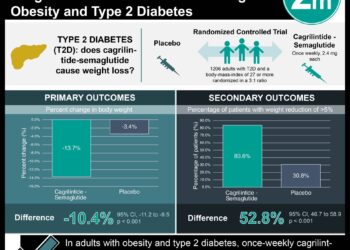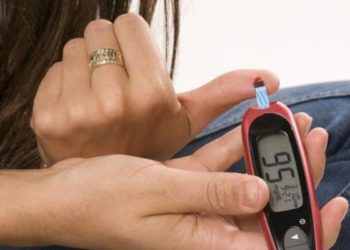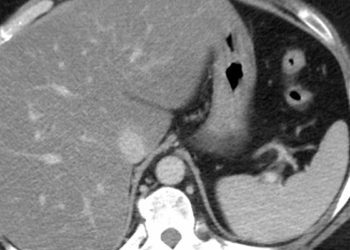The Scan by 2 Minute Medicine®: Black History Month, Mr.Beast, Damar Hamlin and on-field CPR, Ozempic Shortage
2-21-2023
The Scan by 2 Minute Medicine® is a pop-culture medical newsletter and exclusive benefit for 2 Minute Medicine Plus subscribers.
Black History Month
The Story: Every year, February is recognized as Black History Month, a time when the culture and triumphs of Black Americans are recognized and celebrated. In addition to this, it is also a time to reflect and look at ways to make positive changes moving forward. In this section, we will examine two such categories within the medical context- social determinants of health and diversity.
Social Determinants of Health
The social determinants of health (SDOH) are non-medical factors that can influence a person’s health and access to medical services. There are a number of factors that fall under the umbrella of SDOH, such as education, income, and gender, however, race and racism are of particular interest during Black History Month. Black Americans experience unique health challenges such as a higher risk of maternal mortality, a disproportionate amount of COVID-19 deaths, and higher rates of many chronic diseases compared to their white counterparts, including diabetes and heart disease. Furthermore, racism has been known to impact several health dimensions, including mental health, cardiovascular, cognitive outcomes, and more. Issues such as negative experiences in the health care system, lack of access to medical services, lower quality care, and medical mistrust as a result of systemic and structural racism are some of the reasons for the health disparities that are experienced by Black Americans. Bringing attention to the issue of such stark health disparities is important in taking steps in breaking down barriers that influence the Black Community.
Diversity in Medicine
Diversity is still an issue that the field of medicine faces. AAMC estimates from 2018 suggest that only 5% of active physicians in the United States identified as Black or African American, despite accounting for over 13% of the population. In fact, studies have shown that the number of black physicians has not changed much over the past century. Issues of diversity have also been identified in medical teaching, where white patients have often been considered the standard. This has prompted the movement to seek better representation in medical school teaching. There has also been a push for improved diversity in medical research and clinical trials, as people of color are often disproportionately represented in study populations, which limits the generalizability of study findings to these racial and ethnic groups.
Mr. Beast
YouTube’s most subscribed creator, Mr. Beast, recently made headlines when he released a video titled “1000 Blind People See for the First Time.” In the video, the internet sensation paid for sight-restoring surgeries for a thousand people over the span of a few weeks. The video has received praise for its generosity but has also sparked controversy. Although some have criticized the video for using philanthropy to get views, others have pointed out how this video highlights an issue with access to medical care.
There are over 3 million people in the United States who are legally blind and blindness is considered one of the top causes of disability in the country. The many causes of blindness include diabetic retinopathy, glaucoma, and macular degeneration. However, cataracts, which is the medical term for a cloudy area in the eye lens, are the leading cause of blindness in the world. Those who experience blindness as a result of cataracts experience a form of disability that is potentially treatable by replacement with an artificial lens in a rather simple surgery. The procedure can be life-changing, however, access remains a significant issue. Several barriers to accessing care remain in place for those who wish to receive sight-restoring surgery, including funding and insurance coverage, given that the surgery can cost upwards of $3,000 per patient. Globally, those living in lower-income countries also have reduced access to cataract surgery, despite having a higher disease burden. In many lower-income countries, women are significantly less likely to receive sight-restoring surgery, despite accounting for more cases of cataracts. Vision-restoring surgery can drastically improve quality of life for affected individuals.
Damar Hamlin and on-field CPR
Damar Hamlin, an NFL player for the Buffalo Bills, recently went down in a horrifying scare and received on-field CPR from the team’s athletic trainer. Hamlin is now using this experience as an opportunity to teach others about the importance of CPR. He has recently teamed up with the American Heart Association for the #3forHeart CPR Challenge. This three-step challenge encourages people to first learn CPR, then donate to the American Heart Association to help fund CPR training, and share their support by posting a picture and calling on three friends to complete the challenge. So far, Hamlin has challenged celebrities such as Lebron James, Tom Brady, and Michelle Obama to complete the tasks.
CPR involves providing chest compressions following stoppage of the heart which can increase the likelihood of survival by two to three times if administered immediately. It is estimated that over 300,000 Americans experience cardiac arrest outside of a hospital setting each year and it is in such instances that community CPR is vital. However, estimates suggest that fewer than 20% of Americans are up-to-date on their CPR training, which likely explains why although studies have found that more than half of out-of-hospital cardiac events are witnessed by individuals, only around 30% actually receive bystander CPR. Furthermore, the distribution of those who are CPR trained is not evenly distributed. It was found that there were large variations by region in out-of-hospital cardiac arrest survival, which was largely attributable to bystander CPR intervention. Particularly, it was found that the odds of receiving bystander CPR was associated with the income and demographics of the neighborhood in which the event occurred. Improving the number of people who are trained and confident in CPR is an important step in making sure that those who suffer cardiac events have a better chance at survival.
Ozempic Shortage
Diabetics everywhere are feeling the effects of these shortages when they try to fill necessary prescriptions to manage their health condition. Recently, the diabetes medication known as Ozempic has been in short supply due to its use as a weight-loss drug. The injectable medication is used in type 2 diabetes to reduce blood sugar by mimicking the action of a hormone called glucagon-like peptide 1 (GLP-1). GLP-1 works to reduce blood sugar in a number of ways, such as by signaling the body to produce more insulin and slowing the movement of food into the small intestines. GLP-1 antagonists like Ozempic have also been known to contribute to weight loss, through appetitive suppression. The use of GLP-1 agonists as weight management medications is not new. In fact, Wegovy, a prescription medication for weight loss in individuals who are overweight or obese, is the same as Ozempic, only delivered at a higher dose. However, the drug has recently been receiving more attention on Tik Tok and in the media due to its desirable weight-loss effects which have contributed to the ongoing shortages of those who require Ozempic for diabetes management.
The Ozempic shortage has also sparked important discussions regarding the stigma surrounding obesity and the importance of considering obesity as a chronic disease. As some medical associations have advocated for preferential access to the drug for diabetes patients, other professionals have pointed out that limiting the drug’s use to treat obesity perpetuates misconceptions and undermines the importance of considering obesity as a chronic disease. Others are concerned that the drug’s rise in popularity will reinforce body shaming and stigma surrounding weight.
©2023 2 Minute Medicine, Inc. All rights reserved. No works may be reproduced without expressed written consent from 2 Minute Medicine, Inc. Inquire about licensing here. No article should be construed as medical advice and is not intended as such by the authors or by 2 Minute Medicine, Inc






